by Mark Van Proyen
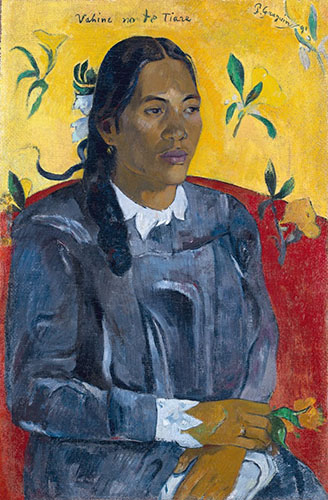
Nonetheless, she persisted. The she I am referring to Gauguin’s wife Mette Sophie Gad, who stayed in touch with her estranged husband long after their marriage failed, and who ends up being a previously unsung hero of this exhibition. After Gauguin died in 1903, she inherited much of the work that the artist’s dealers (Ambroise Vollard and Paul Durand-Ruel) were unable to sell. So she spirited it back to her native Denmark, where, after her own death in 1920, it eventually ended up in the collection of the Ny Carlsberg Glyptotek in Copenhagen. That collection is the home for most of the paintings in the current exhibition, and it also the source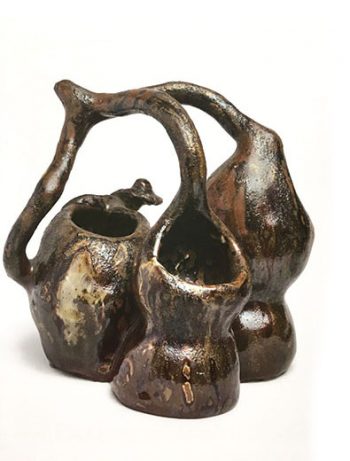
Exhibited close by the ceramic works are some selections from the de Young’s own stupendous collection of traditional Pacific Island art, from places as diverse as New Zealand and the Marquesas Islands, both of which are places that Gauguin would visit near the end of his life. It is almost certain that he was exposed to similar works when he visited the 1889 Paris Exposition Universalle, which no doubt fueled his interest in traveling to the Micronesian islands, which he did for the first time the following year.
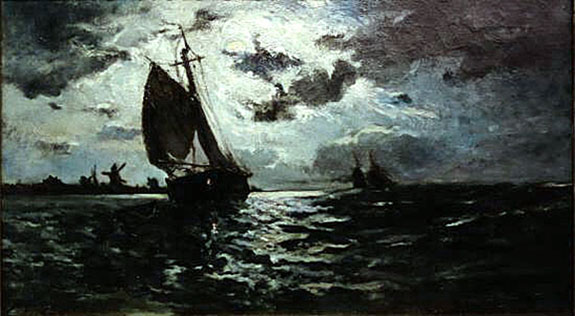
Fifty paintings from the Ny Carlsberg Glyptotek form the core of the exhibition, and represented therein are examples from all of the periods of Gauguin’s career. The earliest ones are generic images of the countryside done in an Impressionist style that seems influenced by the work of Camille Pissaro, but there is another early work that catches the eye for different reasons. It is a gloomy marine scene descriptively titled Sailing Vessel in Moonlight (1876), suggesting the linkage of two things: Gauguin’s depressed state of mind and his early intuition (fantasy?) that escape could bring about a happier future. In 1888, he decamped for the Brittany region of northwestern France, a place known for its rocky coastline and pious manners. It was here that his paintings started to take on a distinctive style and the exhibition affords us a few excellent examples from this period. One of these is titled Landscape from Brittany with Two Breton Women (1888), showing the two figures articulated in a relatively flat, linear manner set against a convoluted landscape articulated a much looser style. The same stylistic attributes are even more pronounced in Breton Girl (1889), which features a reclining figure in the foreground and two cows grazing in a colorful background that starts to anticipate the unbridled chromaticism of the Fauvist and German Expressionist painters who Gauguin would influence 16 years later.
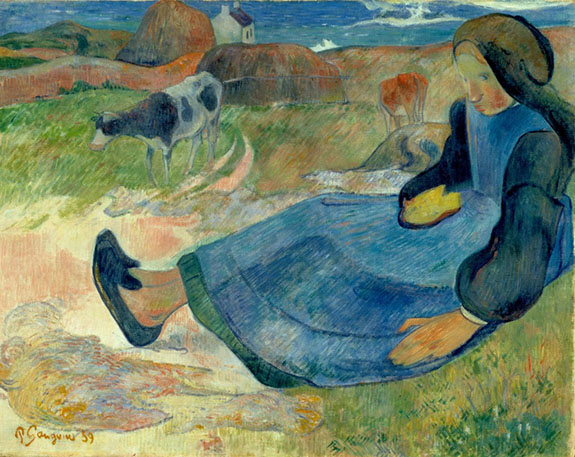
Gauguin briefly returned to Paris and then spent nine turbulent weeks in Arles sharing a house with Vincent Van Gogh. In 1891, he set sail for Tahiti with the intent of founding the “Studio of the Tropics,” with the full support of the French Government. Here, the stylistic innovations that he initially established in his Brittany paintings began to find their full flower. The exhibition features at least two show-stopping paintings from this period, one being Tahitian Woman with a Flower (1891), showing a woman dressed in blue western clothing looking longingly at something beyond the picture. The painting is tour de force in red, yellow and blue, and it belies other aspects of the work that Gauguin executed in this period. In point of fact, Tahiti had been Christianized decades before Gauguin arrived there, meaning that its women had learned to cover their bodies in shame. That shame is subtly captured by the fact that the woman is holding a wilted flower, even as she is also surrounded by a swirl of healthier specimens of the same plant. The other showstopper registers Gauguin’s love of the land and its colors. It is a 1893 work titled Landscape from Tahiti (Apataro [Quartier de Papeete]), a feast of verdant greens, sparkling aquas and grape purples, balancing tropical tranquility with foreboding hints of an oncoming storm.

That much said, I must go on to point out that the overall selection of paintings is surprisingly weak, with only about ten rising to the standard of the artist’s best works. Most of the weaker works hail from Gauguin’s early Impressionist period, and are small and unassuming, but they do muddy the waters insofar as the received opinion about Gauguin’s career is concerned. They also muddy the waters insofar as answering the question about Gauguin’s paintings having something to say to younger painters looking for a path beyond the rinse/dry/repeat of post- Warholian cliché.
The exhibition also contains several groupings of Gauguin’s drawings and graphic works—many culled from the Achenbach Collection of Graphic Art at San Francisco’s Legion of Honor Museum. I find myself wishing that these works were installed in a separate space to allow for focused attention. As it stands, they have a hard time competing with the paintings and three-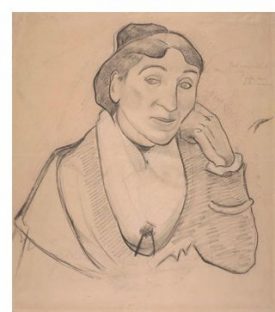
There is one final component to Gauguin: A Spiritual Journey that does have its own contained space. I refer to a video installation by Yuki Kihara titled First Impressions: Gauguin (2018), featuring a focus group of several LBGTQ people from Samoa discussing the merits of Gauguin’s work from the standpoint of a kind of reversed colonizing gaze onto the work. Oftentimes, they speak up to undermine some of the stereotypes that inhabit some of Gauguin’s work, while at other times they lapse into silliness, as when one participant says that snapping a selfie with Meghan Markle would be preferable to owning one of Gauguin’s paintings. But
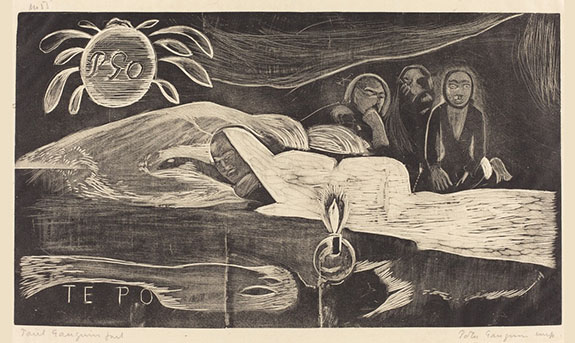
the larger point here is the recognition that gender fluidity was a normal feature of Polynesian culture prior to the arrival of the Catholic missionaries, and during the past three decades, there have been important strides made to return to that condition of normalcy. But I am still not clear about what this has to do with Paul Gauguin’s spiritual journey.
# # #
“Paul Gauguin: a Spiritual Journey” @ de Young Museum through April 4, 2019.
About the Author:
Mark Van Proyen’s visual work and written commentaries focus on satirizing the tragic consequences of blind faith placed in economies of narcissistic reward. Since 2003, he has been a corresponding editor for Art in America. His recent publications include: Facing Innocence: The Art of Gottfried Helnwein (2011) and Cirian Logic and the Painting of Preconstruction (2010). To learn more about Mark Van Proyen, read Alex Mak's December 9, 2014 interview, published on Broke Ass Stuart's Goddamn Website.